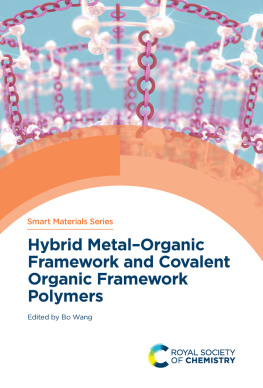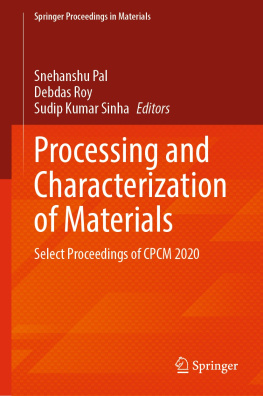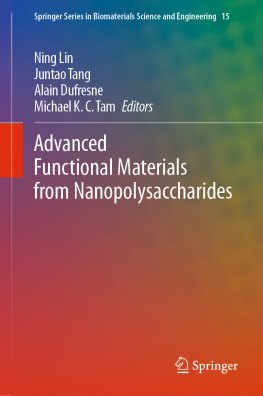CHAPTER 1
Introduction
Jaeyoo Choi
a The Molecular Foundry, Lawrence Berkeley National Laboratory, Berkeley, California, USA,
b Applied Science and Technology Graduate Group, University of California, Berkeley, California, USA
c Department of Mechanical Engineering, University of California, Berkeley, California, USA
d School of Engineering, University of California, Merced, California, USA
e Department of Chemical and Biomolecular Engineering, University of California, Berkeley, California, USA
*E-mail:
The field of in the past decade that this book aims to capture. This was primarily driven by new developments in organic and hybrid materials, and the observation that new TE transport rules, flexible form factors, and low-cost manufacturing processes are all available in these materials.
This book aims to reprise some of the key directions in this field and provide some context on the key developments and opportunities that remain to be explored. In order to quickly develop functional knowledge of this field, a wide-ranging bundle of skills including chemistry, materials science, characterization methods, and transport physics is needed. The following chapters in this book will cover the intriguing electrical and thermal properties of some featured organic materials and their unique transport characteristics will also be discussed. In addition, various interfacial engineering approaches including hierarchal architectures, inorganic/organic hybrid interfaces, and organic intercalation will be introduced.
1.1 Motivation
The long-term consequences of global reliance on fossil fuels have led to a significant need for alternative energy and innovative energy-harvesting technologies. Among them, TE energy conversion However, despite significant potential, TE generators have not yet experienced broad commercial deployment due to a number of challenging issues. Commercially available TEs are typically fabricated with rare or toxic inorganic materials (tellurium, selenium, lead, etc.), and possess other common aspects which limit practical utilization: (1) mass production of TE materials due to scarce resources; (2) shape compatibility to uneven or curved surfaces of heat sources due to rigid form factors; and (3) large-area fabrication for mass-energy conversion owing to energy-intensive fabrication processes. To solve these problems, novel TE material design is required to circumvent the aforementioned limitations. From these reasons, soft TE materials, which are typically based on organic materials, are emerging as a promising candidate for the future TE energy conversion technologies.
Organic materials are an especially appealing area of research for TE applications because they typically possess high levels of mechanical flexibility, are composed of earth-abundant materials, are cost-effective, and have shown the ability for scalable manufacturing. The scalable and low-cost manufacturing of organic materials (polymers, small molecules, etc.) has been demonstrated throughout history for a vast array of different commercial applications. Organic materials also offer the opportunity for leveraging pre-established device fabrication and processing techniques (roll-to-roll, inkjet, etc.) which would enable the production of lightweight and flexible next-generation TE devices with a many different geometries and designs. Thus, fully realizing the potential of organic TEs would enable the fabrication of robust, lightweight, and flexible devices appropriate for a wide range of new applications.
Over the last decade there has been a global Although there is clearly opportunity for the implementation of TE devices, significant progress in the TE generator for wearable applications has lacked thus far. One significant challenge faced by most traditional inorganic TEs is the inherent curvature of the human body and the need for high flexibility and durability in order to ensure tight and stable attachment of the device to the skin. Additionally, traditional inorganic TEs are incompatible with the wide-area manufacturing techniques that would be essential for maximizing energy conversion. Therefore, especially for wearable applications, organic TE materials have many advantages such as flexibility, light-weight, and processability beyond the intrinsic properties of inorganic TE materials despite the low TE performance.
In summary, organic TE materials and generators are a promising field of research due to their many attractive characteristics that suggest the ability to overcome the shortcomings of existing inorganic TE systems. In the following sections, we will present a brief overview of essential topics spanning the fields of chemistry, materials science, engineering, and physics, including a brief historical overview of organic TE materials. TE measurement techniques, including carrier-energy and thermal transport in organic TE systems, will also be briefly discussed, as they are relevant to understanding what challenges remain in understanding and optimizing the performance of these organic TE materials.
1.2 History of TE Materials: Past to Present and Future
Historically, all commercially available TE generators have been based on doped narrow-bandgap semiconductors. A prototypical example of a high-performance TE material is bismuth telluride (Bi2Te3), discovered by H. J. Goldsmid and coworkers in the UK in 1954.
Organic TE materials on the other hand, have attracted increasing amounts of attention throughout the years in an effort to overcome the challenges faced by inorganic TE materials. These soft TE materials are exciting for a number of reasons; they demonstrate novel and unique transport mechanisms and also enable the development of conformal devices that leverage low manufacturing costs. Organic materials including conjugated polymers, polythiophene derivatives, nanoscale carbon-based materials, graphene derivatives, and assorted organicinorganic hybrid materials have emerged as promising TE alternatives owing to their unique advantages including facile processability, scalability, and flexibility as well as low cost and weight. These organic TE materials have been overlooked for the past decades due to their comparably low TE performance, however, recently huge progress on molecular design strategy, nanostructuring, and fabrication techniques are brightening their future. The following section will touch on some important classes of organic TE materials and provide some historical context.
In the early stage of organic TE research, conjugated polymers such as polyacetylenes, polyanilines, polypyrroles, polyphenylenevinylenes, and metallated polymers were studied due to their reasonable electrical conductivity, good chemical stability, and easy processability. However, low Seebeck coefficients and inefficient fabrication techniques have been critical barriers to the application. Considering this historical background, development of innovative fabrication techniques, which will be introduced more thoroughly in Chapter 9 by Professor Kun Zhang, is an interesting topic worthy of further exploration.
Another family of promising candidates More details on these approaches will be discussed in Chapter 4 by Professor Jianyong Ouyang.
Since the first discovery by Iijima about three decades ago, TE behavior of n- and p-type CNTs will be described in Chapter 5 by Professor Kamal Kar.
Hybrid organicinorganic materials is another area of material research that enables pairing the high performance and durability of the inorganic component with the inherent cost-effectiveness and flexibility of the organic component. Especially intriguing is the fact that certain hybrid materials are not only enabled to fabricate via solution processable printing or casting but also have demonstrated synergistic effects where the hybrid material performance surpasses the additive performance of either of the initial parent components. The exact physical mechanism underlying these synergistic enhancements is unclear, but an active topic of inquiry in the TE community. Some competing hypotheses have garnered traction of late, including energy filtering, morphological and interfacial charge transfer effects, amongst others. Further examination of both the theoretical and experimental nature of this synergistic phenomenon will be discussed in Chapter 7 by Professor Lidong Chen.
Next page






